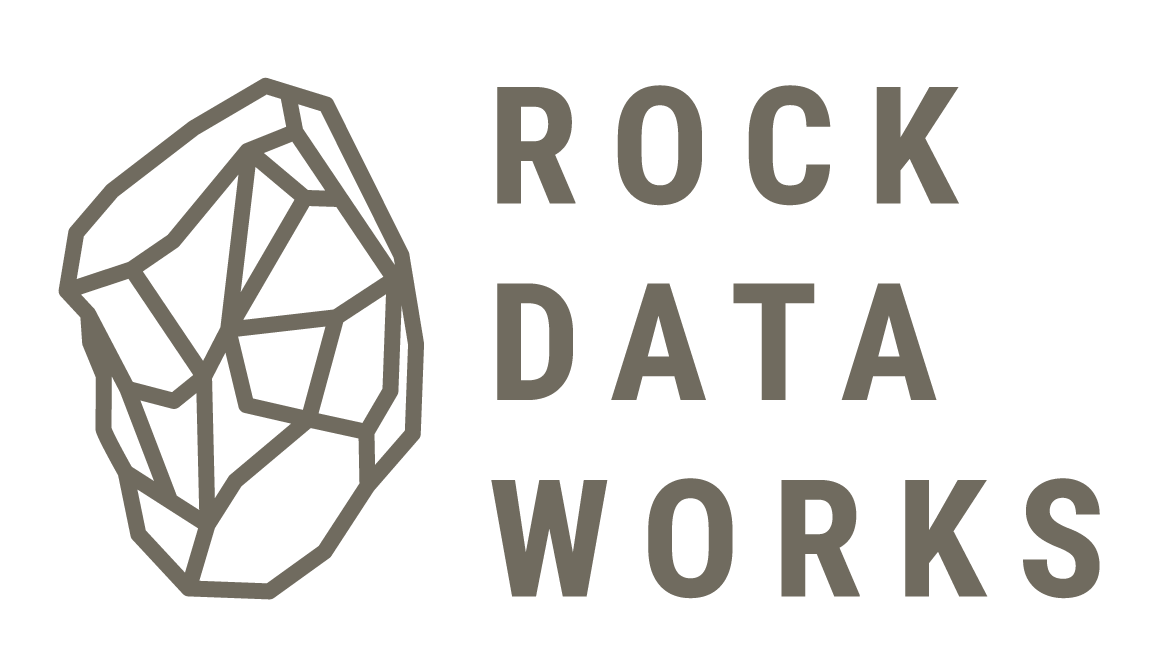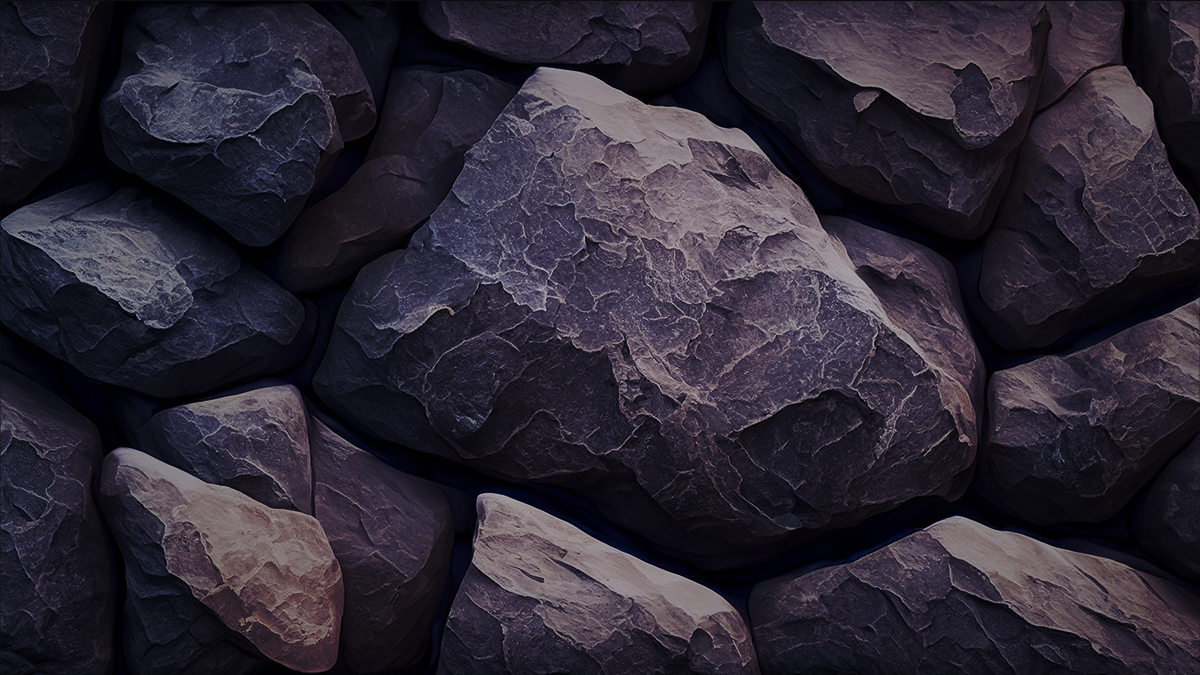At most mines around the world a certain portion of waste rock needs to be excavated in order to access the ores and minerals that contain value. This waste rock is usually dumped on piles nearby the mining operation. In many cases, the waste rock still contains valuable metals or minerals. Only their grade or concentration within the rock is too low to economically extract them.
Distinguishing between ore and waste is based on the local geology and chemical analysis of samples in a laboratory. These samples are usually collected through drilling or by grabbing them from the surroundings of mined out areas. Geo-statistical models are used to interpolate the chemical data in between sampling locations and estimate ore grade for certain mining blocks. Based on the geology and grade estimates, different zones of ore and waste are mined separately.
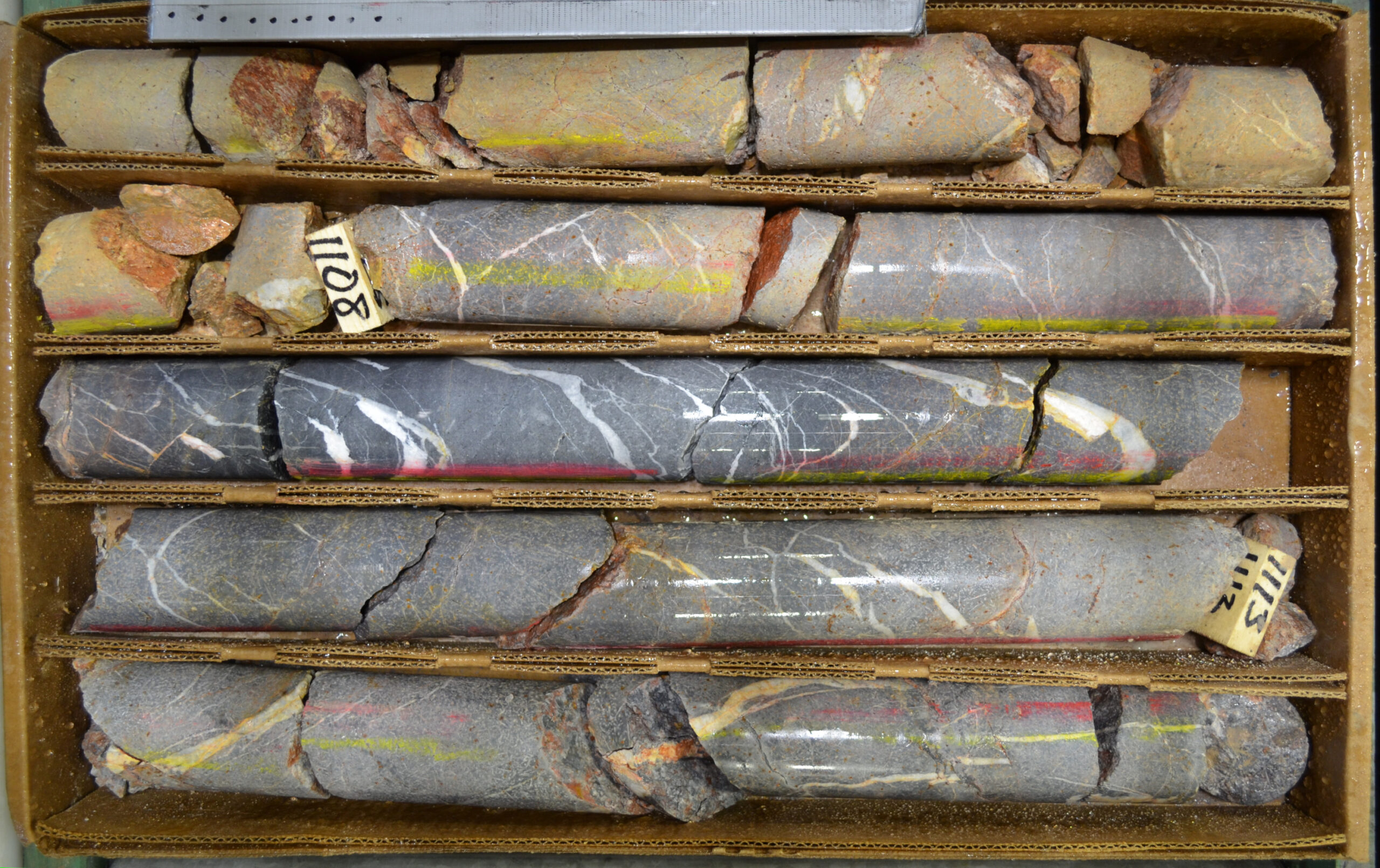
Example of drilling samples used to generate models of ore grade distribution.
The precision of ore grade estimates heavily depends on the amount of sampling that is performed and the type of ore deposit that is mined. The block sizes for which the estimates are made are fairly large, typically reaching 25×25×15 m at big open-pit mines. However, there are many deposit types where the ore minerals follow a complex structure of veins or fractures that are only millimetres to centimetres wide (see 1.3. Basic mining geology principles for more info). This means that when a mining block is broken down into particles, the grade variations throughout the pile of particles can be large. Even though such an ore pile is classified as ore, a certain percentage of particles within it will actually be waste.
For many ore deposits the small-scale variations of different ore grades are not seen by using the traditional approach for grade control (see 1.4. Current source of ore data for more details). This means there are likely batches of material wrongfully allocated as waste or ore, meaning that ore is lost and mineral extraction processes are diluted with waste. From a perspective of responsible resource utilization, we should strive to minimize such ore losses. The use of sensors can be a major game changer to achieve this.
There are many sensor technologies available today that can gather information on ore grade at a very high speed and without any sample preparation. This can be used to greatly increase the number of measurements on bulk ore volumes by scanning it during transport on a conveyor belt for example. This can significantly reduce sampling errors and improve the precision of traditional methods for determining the composition of bulk materials (see 1.5. Benefits of sensor applications for more details).
Additionally, sensors can be used for grade determinations on smaller volumes. It is even possible to evaluate single rock particles and use ore sorting machines to separate them. Alternatively, small batches such as truck- or excavator loads can be sorted more efficiently to reduce ore losses. Sorting individual particles or small ore batches can be used to eliminate waste from mineral extraction processes and improve resource efficiency.
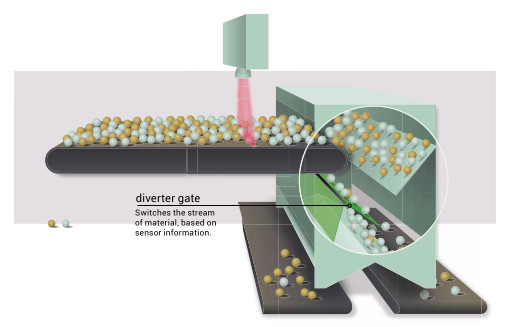
Concept of sensor-based bulk ore sorting.
source: PhD thesis M.Dalm (2018 – TU Delft), https://doi.org/10.4233/uuid:70a1e180-ef0c-4226-9af3-7e9dc3938c7f
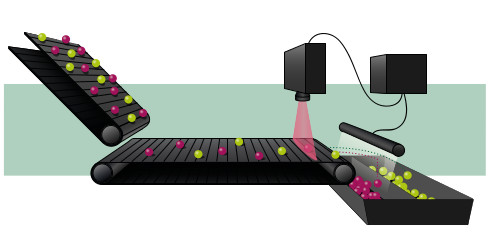
Concept of sensor-based particle sorting.
source: PhD thesis M.Dalm (2018 – TU Delft), https://doi.org/10.4233/uuid:70a1e180-ef0c-4226-9af3-7e9dc3938c7f
Sensor data can also be used to optimize mineral processing. This can be achieved by scanning the feed and output of certain processes and adapting process parameters to maximize mineral recovery for a specific type of incoming material. Artificial intelligence (AI) machines can be used to fully automate such optimizations. This means it is not needed to interpret the raw sensor data to derive information on grade and mineralogy. Instead, the AI can link the material fingerprints recorded by sensors to process parameters and production results.
Integrating sensor systems with AI throughout the entire mining process can be used to redefine ore value. Instead of evaluating ores on the basis of valuable element concentrations, actual changes in metal recovery from processing the ore can be linked to certain sensor signals. If these signals can be traced back to measurements on in-situ samples from drill holes, better predictions of future mining production may be possible.
Sensors can be used to improve the resource efficiency of many operating mines. Additionally, there are many closed and historic mine sites where sensor applications may provide options to revitalize waste piles and turn these materials into processable ore. Such innovations are vital in enhancing the sustainability of mining and securing a mineral resource supply for future generations.
